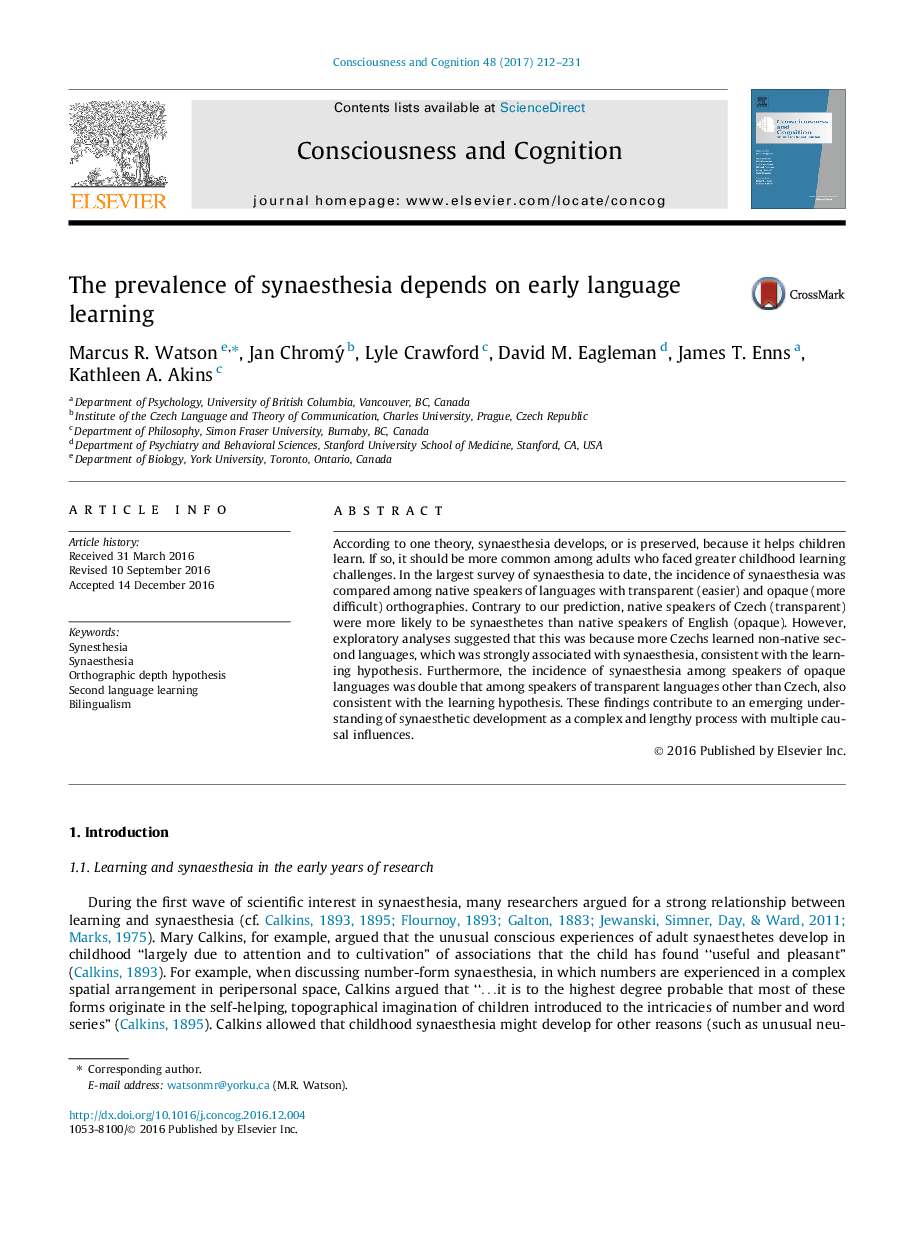ترجمه فارسی عنوان مقاله
شیوع سینوشه بستگی به فراگیری زبان اولیه دارد
عنوان انگلیسی
The prevalence of synaesthesia depends on early language learning
| کد مقاله | سال انتشار | تعداد صفحات مقاله انگلیسی |
|---|---|---|
| 134334 | 2017 | 20 صفحه PDF |
منبع

Publisher : Elsevier - Science Direct (الزویر - ساینس دایرکت)
Journal : Consciousness and Cognition, Volume 48, February 2017, Pages 212-231
ترجمه چکیده
بر طبق یک نظریه، سینوشه توسعه می یابد یا حفظ می شود، زیرا این امر به کودکان کمک می کند تا یاد بگیرند. اگر چنین است، باید در میان بزرگسالانی که با چالش های یادگیری دوران کودکی مواجه می شوند، بیشتر باشد. در بزرگترین بررسی سینوسی تا به امروز، میزان بروز سینوشه در بین زبان مادری زبان با عبارات شفاف (ساده) و مات (سخت تر) مقایسه شده است. بر خلاف پیش بینی ما، زبان مادری چکی (شفاف) احتمالا بیشتر از زبان انگلیسی زبان (انگلیسی) (زبان ممتاز) است. با این حال، تجزیه و تحلیل اکتشافی نشان داد که این به این دلیل بود که بیشتر چک ها زبان های غیر زبان مادری را فرا گرفتند که به شدت با سینوزیه همراه بود، مطابق با فرضیه یادگیری. علاوه بر این، بروز سینوشه در میان سخنرانان زبان های مبهم دو برابر بود که بین سخنرانان زبان های شفاف، غیر از چک، هماهنگ با فرضیه یادگیری بود. این یافته ها موجب درک در حال ظهور توسعه ژنتیک به عنوان یک پروسه پیچیده و طولانی با تأثیرات متعدد علی می شود.

